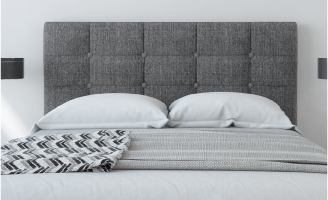 Stainless steel cookware has become a fundamental part of a modern kitchen. Stainless steel pots and pans do not alter flavours, are visually attractive, durable, and offer an exceptional cooking performance. It’s no wonder this type of cookware has become increasingly popular!
Stainless steel cookware has become a fundamental part of a modern kitchen. Stainless steel pots and pans do not alter flavours, are visually attractive, durable, and offer an exceptional cooking performance. It’s no wonder this type of cookware has become increasingly popular!
Like all specialized cookware, there are “dos” and “don’ts” when it comes to using and cleaning this type of metal. Follow our tips to master the art of cooking with stainless steel.
Preheating is an Essential Cooking Step
You should always preheat your stainless steel cookware because of the properties of this kind of metal. When cold, the surface of the stainless steel is a bit porous, which allows food to stick to it more easily. When you heat it, the metal expands to form a smooth surface and reduce the pores, making it much harder for food to stick to the pot or pan.
Use low or medium heat to preheat the empty pan. In order to know when it is ready, you can add a few droplets of water onto the surface. If the droplets glide around, then it is ready to be used for cooking.
Once adequately preheated, remove your cookware from the heat before adding your cooking oil. Once added, place the pot or pan back onto the heat and wait about 5 seconds before adding any food.
Avoid Using High Heat while Cooking
It is advisable to always keep the heat at a low or medium setting when using stainless steel items. This will help avoid discolouration to the steel and avoid any damage to the non-stick surface (if applicable), as well as prevent the food from burning. If a recipe calls for medium-high heat, opt for the lower temperature setting when possible: set the heat to 4 or 5 instead of 6 or 7 on your cooktop.
Stainless steel cookware is made with a core material that is highly conductive (often aluminum) that allows quick and uniform distribution of heat. The efficiency of this type of material means you should have your ingredients prepped and ready to go before heating the pan. This way you can add them to your dish quickly and avoid overheating your cookware.
What To Do With Meat that Sticks to the Pan?
If the meat you are cooking is sticking to the bottom of the pot or pan, it simply means it is not ready to eat and you should give it more time to cook.
When the stainless steel surface has been properly preheated and oiled, meat develops a nice crust that separates it from the steel. Once this crust has formed, the meat is ready to be flipped.
The brown residue that forms at the bottom of the cookware is full of flavours and can be turned into a sauce or gravy as a nice addition to the meal. To deglaze it, simply add a bit of broth or wine and bring it to a boil. Once boiled, scrape the residue with a wooden spoon and mix it until the liquid reduces by half. You can then add your preferred seasonings and serve your perfect home-made sauce with your perfect home-cooked dish.
How to Clean and Care for Stainless Steel Cookware
In order to avoid scratching the surface of the cookware, make sure to only use utensils that have a silicone, wood or plastic tip. This includes tongs, spatulas, spoons, etc. It is essential to keep metal utensils away from the stainless steel and never cut your food directly in the pot or pan.
It is also advisable to not pour cold water or add frozen foods onto a hot stainless steel dish. Drastic temperatures are your sworn enemy!
Cleaning your stainless steel dishes is a little more complex than just throwing it in the dishwasher, but the enhanced quality of your meal is worth the extra effort. Wait until the pot or pan is back to room temperature, then clean it in warm water with dish soap. Stubborn stains can be removed with specialized cleaning products like Bar Keepers Friend. Dry your cookware with a clean and gentle kitchen cloth.
With all these tips on using your stainless steel cookware, you’re now ready to cook your favourite meals to perfection! Bon appétit!
Looking for the perfect set of stainless steel cookware? Look no further:
- All-Clad 3-Ply 10-Piece Stainless Steel Cookware Set
- J.A. Henckels International Kitchen Elements 10-Piece Stainless Steel Cookware Set
- Ricardo 3-Ply 10-Piece Stainless Steel Cookware

 Custom Window Blinds
Custom Window Blinds Gift Registry
Gift Registry Gift & eGift Cards
Gift & eGift Cards Custom Headboards
Custom Headboards







